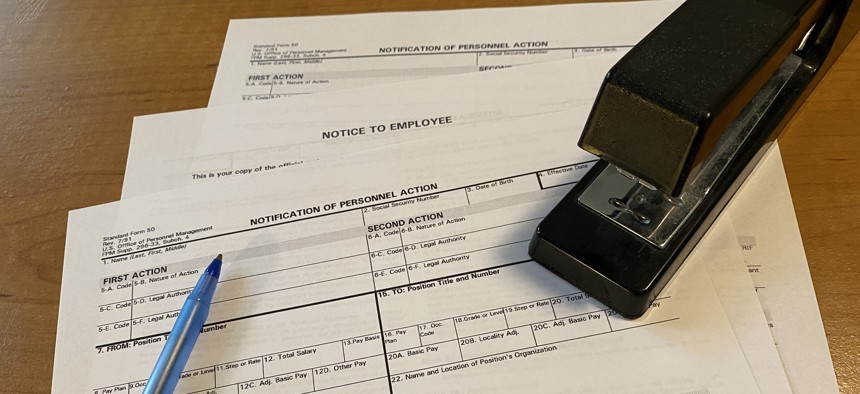Do you know how much your Standard Form 50 (Notification of Personnel Action) statements reveal about your future retirement? The answer might be more than you think.
Before there were electronic official personnel folders, there were cardboard official personnel folders held together by metal fasteners that held copies of an employee’s SF-50s. and a second copy was given to to the employee for their own records. It’s still a good practice to keep copies of your SF-50s.
The reason is you can use these forms to determine the effective date of any relevant personnel actions that define your federal career history. These personnel changes are used in determining your eligibility for retirement and the computation of your retirement benefit.
An employee normally has only one OPF or eOPF. It follows the employee from one agency to another when he or she transfers, or upon request is sent from the Federal Records Centers at the National Archives and Records Administration to the new agency where an individual is reemployed after an extended break in service. Most agencies forward records to the FRC when an employee separates from federal service. A few, however, retain permanent records of separated employees and should be contacted directly for verification of service. Your payroll office also keeps the primary evidence of your federal service by maintaining your individual retirement records.
Some types of service are not reflected on SF-50s. They don’t, for example, reflect military active duty service. And there are some types of civilian service that may be documented differently, such as volunteer service in the Peace Corps.
Your SF-50s also don’t reflect whether your service is actually creditable towards your retirement eligibility and computation. This should be verified through a human resources specialist at your agency. Sometimes you need to pay a deposit or a redeposit of retirement contributions in order to credit the service. Details regarding creditable civilian service are outlined in Chapter 20 of the Office of Personnel Management’s Civil Service Retirement System and Federal Employees Retirement System Handbook.
Personnel actions on your form SF-50s include appointments, separations, placement and return to duty from nonpay status, conversions to permanent appointment from temporary appointments, and other types of pay and position changes. Basic pay changes are documented on these statements as well as your retirement plan and life insurance coverage.
An example of how complicated personnel actions have become can be seen by the retirement coverage code noted in item 30 of your SF-50 (on SF-50s issued before Oct. 1, 1988, it’s item 8), indicating the type of retirement coverage. Instead of showing simply CSRS or FERS, the form can include a myriad of other letters and numbers indicating such types of coverage as:
- 4: None
- FICA (or 2-FICA): Social Security coverage
- CS (or 1-CSRS): Civil Service Retirement System
- CS-Spec (or 6-CSRS-Special): CSRS for law enforcement and firefighter personnel
- C: FICA and CSRS (partial)
- R: FICA and CSRS (full)
- FS: Foreign Service Retirement and Disability System
- FERS (or K FERS and FICA): Federal Employees Retirement System
- FERS-ATC (or L FERS and FICA ATC): FERS for Air Traffic Controllers
- FERS-Spec (or M FERS and FICA Special): FERS for law enforcement and firefighters
- FSPS: Foreign Service Pension System
One reason it’s important to know what retirement coverage is on these forms is that errors can creep into the process. This has been especially true since FERS was implemented in 1986. In 1999, the Federal Erroneous Retirement Coverage Corrections Act was enacted to allow employees to correct such errors. This primarily affected people for whom errors caused them to believe they were covered by CSRS rather than FERS. The FERS basic benefit is a little over half that of the CSRS benefit, so FERS employees need to save more for retirement in the Thrift Savings Plan.
If you don’t have copies of your SF-50s and you’re a current federal employee, you can find the forms in your eOPF. If you recently left your federal job, contact your former agency’s personnel office. If it’s been more than 30 days since you left, you need to contact the FRC. Such requests must be signed and dated, and sent by mail to:
National Archives and Records Administration
Civilian Personnel Records
1411 Boulder Boulevard
Valmeyer, IL 62295
Include your full name, Social Security number, date of birth, and a list of all federal agencies where you were an employee—with addresses and dates of your employment, to the extent you know them.






